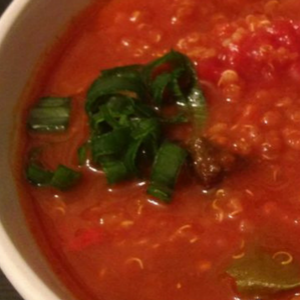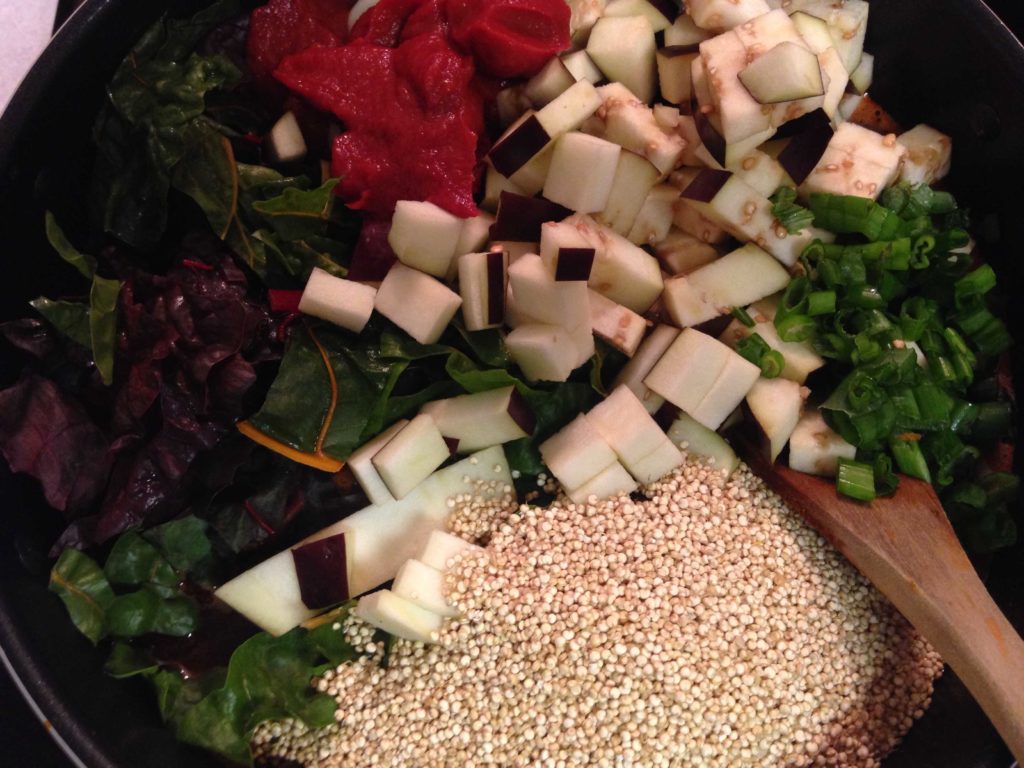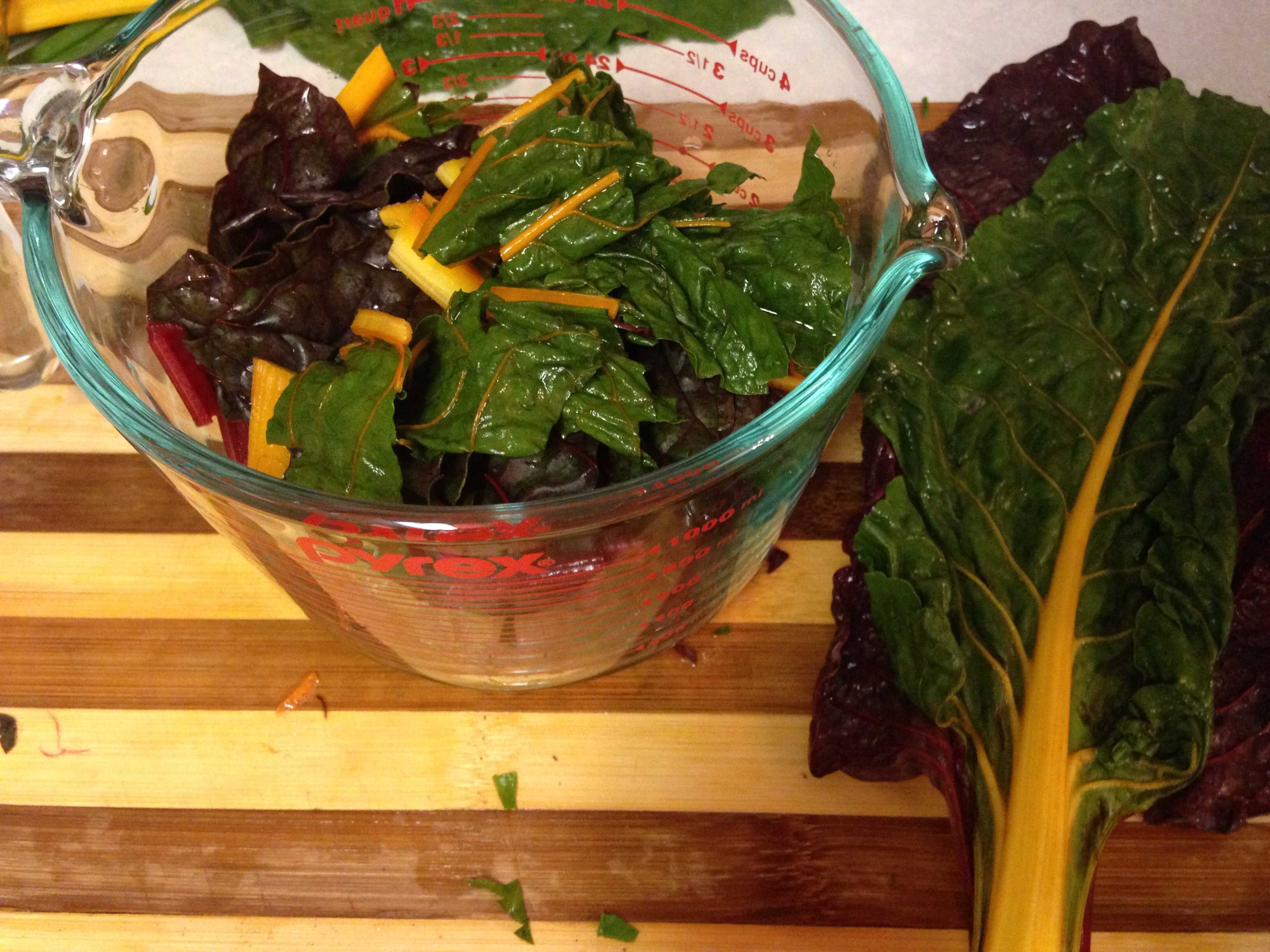This soup is my one-pot go-to meal.
It’s perfect for fall or any occasion when you want to increase your nutrient load. The unique thing about this recipe is that it was developed with Irritable Bowel Syndrome (IBS) in mind.
IBS is one of the most common gastrointestinal disorders affecting 10-15% of the population in industrialized countries ¹. Symptoms include abdominal pain, bloating, flatulence, diarrhea, and constipation. The causes of IBS aren’t well understood although multiple theories exist. Although there is no cure for IBS, dietary and lifestyle changes can help relieve the symptoms and improve quality of life ².
Some of the dietary changes that can help are increasing fiber intake, avoiding gluten and the low FODMAP diet. FODMAP stands for fermentable oligosaccharides, disaccharides, monosaccharides, and polyols. They are sugars that are fermentable by your gut bacteria and can irritate the colon of IBS sufferers.
This soup is high in fiber, gluten-free and low in FODMAPs!
Some of the most common high FODMAP foods are onion and garlic. Onion and garlic are used in so many dishes and most of us can agree, they taste so good. So I’ve had to find ways of using spices and food combinations to give dishes wonderful flavors.
This recipe serves over 10 people but usually, when I make it, I keep portions of soup in glass Tupperware in the fridge for the week or in the freezer. This is a great option for the next time I’m too lazy to cook a healthy meal!


High Nutrient Quinoa Tomato Soup
Ingredients
- 3 tsp cumin
- 1 tbsp paprika smoked
- 2 tbsp olive oil extra virgin, organic
- 5-7 carrots (4 cups chopped)
- 2 red peppers
- 8-9 tomatoes cooked, peeled and diced
- 1/2 cup tomato paste
- 1/2 large eggplant (2 cups chopped)
- 4 cups rainbow swiss chard chopped
- 1 cup quinoa sprouted
- 5 green onions (only the green part)
- 1/4 cup tamari or gluten-free soy sauce optional
- 8 cups water
- salt and pepper to taste
Optional
- 1 tbsp maple syrup
- chili or cayenne pepper
Instructions
- Add olive oil to a large deep pan on medium heat. Add paprika and cumin and any other spices you may like (chili, cayenne).
- Add chopped carrots and ½ cup of water and close lid.
- Steam carrots for 10 minutes. During this time, prepare other ingredients.
- Peel tomatoes if not using already peeled ones.
- Remove the large stems from the swiss chard.
- Chop red pepper and place in blender with ½ cup of water and blend until mostly smooth.
- Add pepper sauce and peeled tomatoes to pot.
- Add all other ingredients to the pot.
- Stir well, cover and simmer for 40 minutes.
- Cool slightly and taste to adjust salt and pepper. Enjoy!
Nutrition

Quinoa
Quinoa is a complete source of protein. What that means is that it provides all the amino acids that the human body can’t make on its own. The 9 essential amino acids are histidine, isoleucine, leucine, lysine, methionine, phenylalanine, threonine, tryptophan, and valine. Quinoa also provides tyrosine and cysteine. In 1 cup of cooked quinoa, you get 5 grams of fiber, 8 grams of protein and 4 grams of fat. You also get 19% of your daily folate, 15% of iron, 30% magnesium, 28% phosphorus, 13% of zinc, 18% of copper and 58% of manganese!
Protein is super important for your bones as proteins make up a large portion of our bone matrix. You can read more about the role of protein here.

Swiss chard
Swiss chard is amazing to support bone health. It is high in calcium, magnesium and Vitamin K! In 1 cup of cooked Swiss chard (175 grams), you get 4 grams of fiber, 3 grams of protein, over 200% of your daily Vitamin A, 53% of vitamin C and 716% of vitamin K (573 mcg). For minerals, you get 101mg calcium, 4 mg iron, 150 mg magnesium, 961 mg potassium, and many other minerals! ³
This soup is packed with veggies and bone-healthy nutrients. If you don’t have IBS you can definitely add onion and garlic too! But the paprika and cumin really bring out the flavor of the tomato and the red pepper gives it a slight sweetness too. You can experiment with different veggies, I’ve tried zucchini instead of eggplant and it worked really well too and you can even do both!
Let me know if you try this and what else you added to yours in the comments below!
Sources:
- Maxion-Bergemann S, Thielecke F, Abel F, Bergemann R; Thielecke; Abel; Bergemann (2006). “Costs of irritable bowel syndrome in the UK and US”.PharmacoEconomics. 24 (1): 21–37.
- Chey WD, Kurlander J, Eswaran S. Irritable Bowel SyndromeA Clinical Review.JAMA. 2015;313(9):949-958.
- Nutrition Facts and Analysis for Chard per 175 grams, USDA National Nutrient Database, version SR-21″. Conde Nast. 2014.

[recipe_widget]





mananya mallikamas
October 12, 2016 , 5:29 pmI would love to try to make this soup, thinking that I might have the IBD. How do you sprout the quinoa? If you don’t mind my silly question.